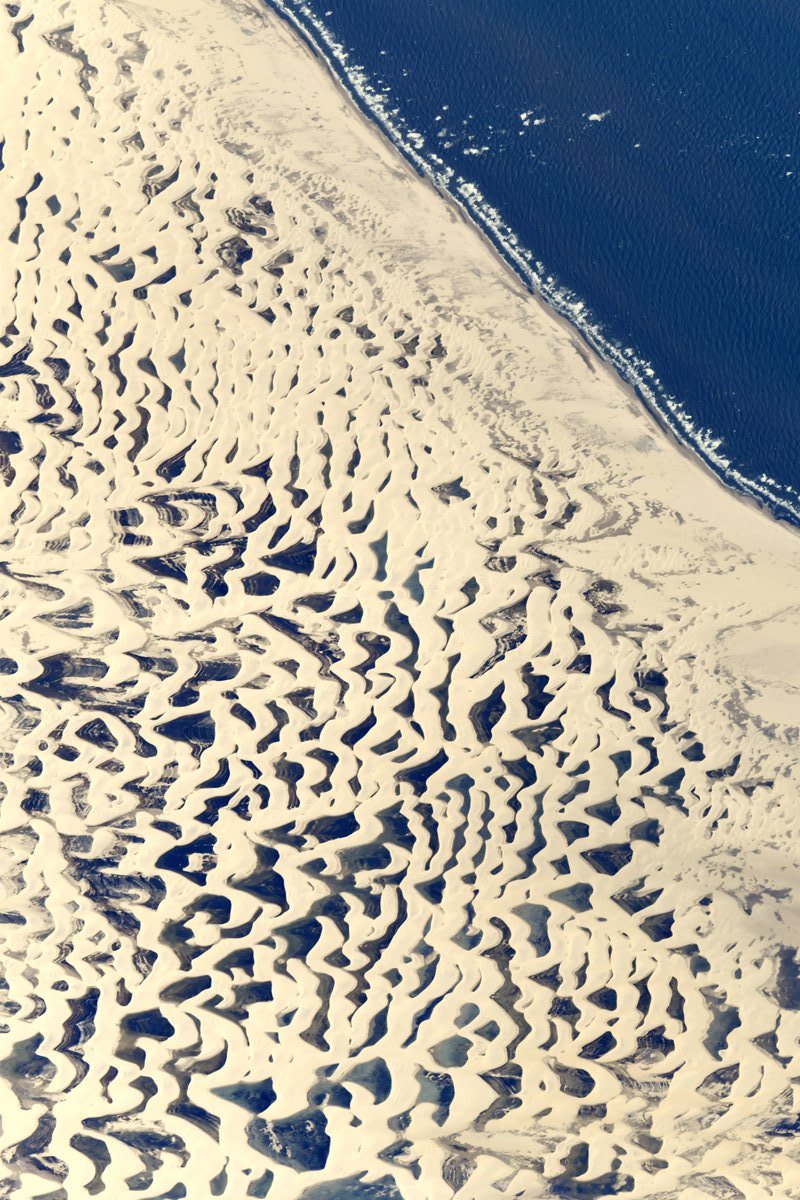[:ja]セルゲイ・リャザンスキー宇宙飛行士がISSから撮影したブラジル北東部マラニャン州のレンソイス・マラニャンセス国立公園です。真っ白な大砂丘が広がり、雨季の間にだけ砂丘の間に無数のエメラルド色の湖が現れます。

Lençóisとは「シーツ」を意味しますが、まるでシーツのように白い砂丘が15.5万haに渡って広がっています。砂丘の砂の成分はほぼ100パーセント石英でできており、それが太陽光に反射して白く見えています。1~6月の雨季には、地下水の水位が上昇し無数の湖が出現、魚も現れますが、乾季の間はどのように過ごしているかははっきりとしていません。ちなみに、No.10でも紹介しています。
地上の様子はこちらです。


参考文献: Sergey Ryazansky’s Tweet
ウェブ地球儀で地球俯瞰画像を見る: LiVEARTH
[Earthview Wonders] No.435: Lencois Maranhenses, Brazil🇧🇷
Astronaut Sergey Ryazansky captured from ISS Lencois Maranhenses National Park, northeast Brazil. It is an area of low, flat, occasionally flooded land, overlaid with large, discrete sand dunes. Lencois Maranhenses is introduced with No.10 as well.

Lying just outside the Amazon Basin, the region is subject to a regular rain season during the beginning of the year which cause fresh water collects in the valleys between sand dunes. The lagoons have large numbers of fish that arrive when the lagoons are at their fullest after July. One species of fish, the wolf fish or tiger fish (Hoplias malabaricus) stays dormant in the mud and moist areas after the majority of the water has evaporated, re-emerging during the next rainy season. Lencois Maranhenses is introduced with No.10 as well.
The local scenery on the ground is as follows.


Reference: Sergey Ryazansky’s Tweet
See earthview photo gallery with web-globe: LiVEARTH[:en][Earthview Wonders] No.435: Lencois Maranhenses, Brazil🇧🇷
Astronaut Sergey Ryazansky captured from ISS Lencois Maranhenses National Park, northeast Brazil. It is an area of low, flat, occasionally flooded land, overlaid with large, discrete sand dunes. Lencois Maranhenses is introduced with No.10 as well.

Lying just outside the Amazon Basin, the region is subject to a regular rain season during the beginning of the year which cause fresh water collects in the valleys between sand dunes. The lagoons have large numbers of fish that arrive when the lagoons are at their fullest after July. One species of fish, the wolf fish or tiger fish (Hoplias malabaricus) stays dormant in the mud and moist areas after the majority of the water has evaporated, re-emerging during the next rainy season. Lencois Maranhenses is introduced with No.10 as well.
The local scenery on the ground is as follows.


Reference: Sergey Ryazansky’s Tweet
See earthview photo gallery with web-globe: LiVEARTH[:]